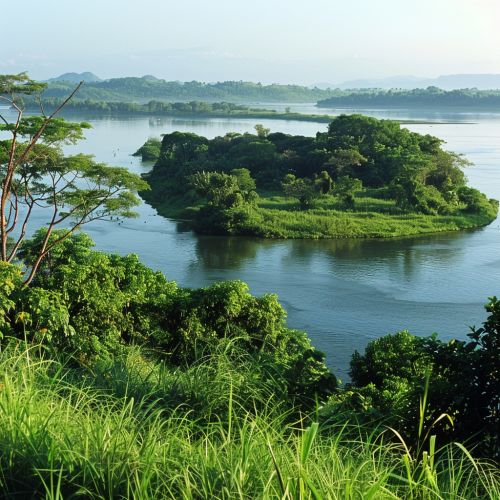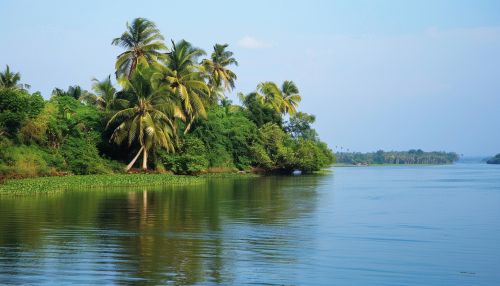River island
Overview
A river island is a landmass within a river. It is a type of fluvial landform that forms from sedimentation where the water splits into multiple streams. These islands are subject to a unique set of ecological conditions due to their location and the influence of the river's flow.


Formation
River islands are formed through a process known as fluvial processes. These processes involve the movement of sediment within the river system. When the flow of a river slows down, it loses the energy needed to carry sediment. This sediment is then deposited, gradually building up to form an island. The formation of a river island can take many years, depending on the volume of sediment and the flow rate of the river.
Types of River Islands
There are several types of river islands, each with unique characteristics.
Mid-channel Islands
These are located in the middle of the river channel and are the most common type of river island. They are often formed by the deposition of sediment around a pre-existing obstruction in the river, such as a large rock or a fallen tree.
Side-channel Islands
These are located at the edge of a river channel and are formed by the deposition of sediment in areas where the river flow is slower.
Braided River Islands
These are found in braided rivers, which have multiple channels that divide and recombine. The islands in these rivers are usually small and temporary, as the channels frequently change.
Ecology
River islands are unique ecosystems that support a variety of plant and animal species. The constant flow of water around the island creates a moist environment that is ideal for certain types of vegetation, such as willows and cottonwoods. These plants, in turn, provide habitat for a variety of wildlife.
The ecology of a river island can be influenced by several factors, including the size of the island, the flow rate of the river, and the types of sediment present. Larger islands with slower flow rates and finer sediment are often more biodiverse, as they provide a more stable environment for plants and animals.
Human Interaction
River islands have been utilized by humans for thousands of years. They have been used for farming, as the rich sediment deposited by the river makes the soil highly fertile. They have also been used for habitation, with many cities and towns being built on river islands.
However, living on a river island can also pose challenges. Flooding is a common issue, as the islands are often located in the floodplain of the river. Erosion can also be a problem, as the constant flow of water can gradually wear away the island.
Conservation
Conservation of river islands is important, as they are unique ecosystems that support a variety of plant and animal species. However, they are often threatened by human activities, such as farming and construction, which can lead to habitat loss and degradation.
Conservation efforts for river islands often involve protecting the islands from development and maintaining the natural flow of the river, which is essential for the formation and maintenance of the islands.
